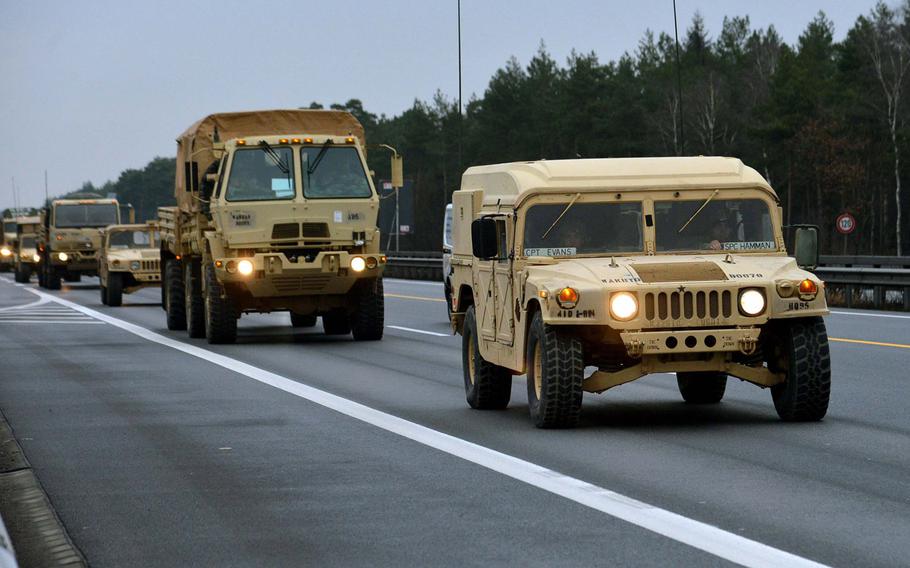
A convoy of vehicles of 3rd Armored Brigade Combat Team, 4th Infantry Division drives along a German autobahn in 2017, on its way to Poland. The U.S. has joined a European Union effort to consider ways to move troops across European national borders faster. (Michael Abrams/Stars and Stripes)
STUTTGART, Germany — The United States this week joined a European Union effort focused on clearing bureaucratic obstacles that stand in the way of moving military forces more quickly across the Continent’s borders.
NATO Secretary-General Jens Stoltenberg welcomed an EU decision Thursday that gives three non-EU countries — the U.S., Canada and Norway — a seat at the table on military mobility policies in Europe.
“Non-EU allies play an essential role in protecting and defending Europe,” Stoltenberg said ahead of talks with EU defense officials Thursday.
Mobility and the bureaucratic impediments facing it has been a focus among allies for several years. Problems with moving large numbers of troops and equipment emerged as the U.S. and other NATO members intensified the scale of maneuvers up and down NATO’s eastern flank in the aftermath of Russia’s 2014 intervention in Ukraine.
Some U.S. officials have called for a military “Schengen Zone” in Europe, which would allow U.S. and other national contingents to move freely toward missions in places such as the Baltics and Poland.
The EU’s Schengen Agreement provides for free movement of civilians and goods across most of the Continent. But it does not apply to the armed forces, and different national rules on military convoys and inspections have caused movement delays in the past. NATO has been seeking a more streamlined approach that will enable forces to move faster and on shorter notice during a crisis.
In 2019, NATO launched a mission based in Ulm, Germany, focused exclusively on ensuring the speedy flow of military hardware around Europe. This week, NATO forces are testing their progress with a series of exercises dubbed Steadfast Defender.
The drill “demonstrates the importance of moving NATO troops quickly throughout Europe and that is also the reason why military mobility is so important,” Stoltenberg said.
vandiver.john@stripes.com Twitter: @john_vandiver